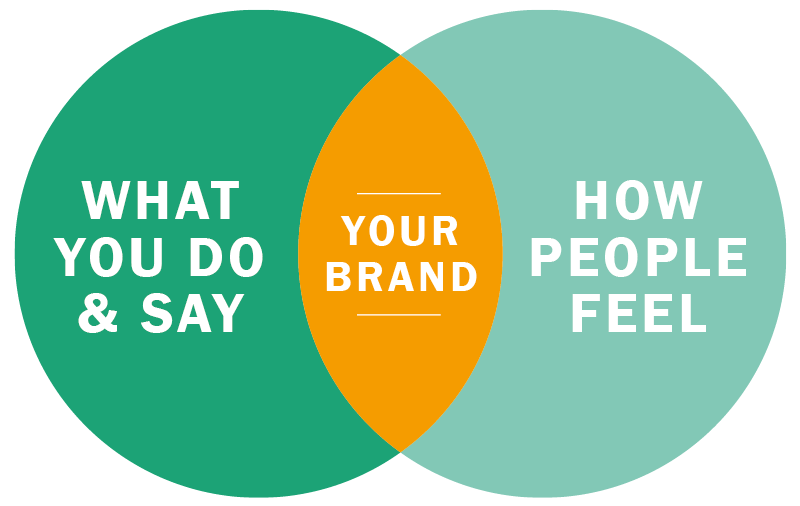By Dr Marina Hauer, Brand Development Consultant at Apricity Studio and Expert Speaker on the Help to Grow Management Programme
Picture this scene: It is four in the morning on a drizzly corner somewhere in a large city. A large crowd of people has gathered on the pre-dawn pavement outside a glass-fronted store.
Some have been there all night. Despite the wet, the cold and the ungodly hour, there is a festival atmosphere in the air.
Everybody is excitedly waiting for the release……of the newest iPhone!
A gadget which, let’s face it, is no different to the one they already have in their pockets. And which they could have ordered online and had delivered to the comfort of their house in a couple of days’ time.
But these people don’t want ordinary. They want to be first – and to them, all this hassle is totally worth it. In fact, it’s part of the experience!
Now think about your own customers. Unless you’re the NHS, I’m guessing most of them wouldn’t brave 4 AM just for a crack at whatever it is you’re selling.
So how are brands like Apple creating such a buzz around their image – and importantly, how can we get ourselves some of that same magic?
The Difference is Fans
Most businesses have customers, but brands have fans. Fans are great. They are loyal and enthusiastic.
They subscribe, pre-order and queue and above all talk about their favourite thing (your brand) all the time.
Fans are marketing machines, and their lifetime value is infinitely greater than that of a regular customer. We should all aim to turn our customers into fans.
But just having a good product or service, a nice website and a pretty logo aren’t going to make that happen. To create fans, we must first internalise a fundamental truth about brands.
Brands Are About Relationships.
Not logos, colours, or websites. Those are identity systems.
Brands are about what we say and do as businesses (everything we say and do), and how that makes people feel. Brands are about what customers say about you when you’ve left the room. They are about reputation, experience, and emotional connection.
So no, paying a design agency for a quick ‘rebrand’, a fresh new look, won’t magically turn the taps on. It goes much deeper than that and requires focus and dedication.
But above all, it requires these three simple mindset pillars, which can turn your brand thinking into the kind of strategic leadership approach that all great brands follow:

1) Care
And I mean, really care. About everything; Your products, your services, your delivery, your customers and their experience, your people and their experience, your suppliers, your marketing and your public image.
The goal is incremental steps towards excellence – in everything, every day. The goal is to delight, not just serve.
All this is time-consuming and requires constant commitment. It’s not something you do once as a team workshop and then go back to how things were before.
This is the main reason why there are millions of small businesses in the UK, but much fewer true brands. And it’s OK if your ambition is simply to do a good job, keep your customers happy and your people in their jobs.
But if you want to reap the rewards of having fans and great brand equity, you must be seen to really care, and not just when caring is easy.
After all, how can your customers be passionate about you if you (and your team) are not seen to be passionate about them and your own business?
2) Know Where You’re Going (And Why it Matters)
The small business environment is inherently pragmatic. Every day, a million things need to be done just to keep the lights on – nobody has time for such fancy things as brand values, mission statements or culture documents. Does this sound familiar?
But as a clever person once said, you can’t have followers if you don’t know where you’re going.
The Help To Grow Management programme dedicates two whole sessions to mission, values and their importance in brand building, and with good reason. It’s extremely valuable to a business to be able to articulate why they exist, what problem they solve in the world and why that matters.
In the Help To Grow programme, this culminates in an interactive workshop in week six, where participants experience first-hand what it takes to turn values and beliefs into reputation-building, strategic business communication.
Think about how your work and your organisation would transform with a driving mission that mattered. Imagine how much more engaged you’d feel if you knew that the work you did every day played into an important story – the same goes for your team.
When you have a clearly defined mission, you have more than just inspiring words. You have direction.
3) Prioritise Human Connection
When we label customers as, well, customers, our employees as payroll and spend too much time looking at spreadsheets and margins, it’s easy to overlook the fact that behind each transaction, there is a human being.
Someone with hopes and dreams and fears whose life you have impacted in one way or another.
Everything that was every designed, made, bought and sold was designed, made, bought and sold by humans for humans.
Brands remember that. They also remember that people don’t want to feel like numbers in a system – especially post pandemic. And they know that every interaction matters.
Every interaction is a chance to add goodwill (reputation points, also known as brand equity), or to lose some.
Did a good job? Add some goodwill. Delighted someone? Even better.
But if you left someone disillusioned, disappointed, angry or even just bored or ambivalent, your brand loses goodwill. It loses reputation points.
Over time, all these small moments add up to the difference between people who don’t care where they buy, and true fans.
Bonus Tip – Be Distinctive
Fans don’t just love a good product, they love to associate themselves with something unique.
Having a distinct style and flair that can be consistently replicated is a great way of standing out from others in your space.
This is where design can help (just don’t start there). But being human, having a clear direction and caring will already go a very long way towards helping you stand out.
You don’t have to be an international household name to build a great brand. A small, third-generation family-owned butchers shop can have one, just as every florist, undertaker or personal trainer can.
All it takes is consistency and dedication – and a small mindset shift away from selling to customers and towards creating fans.



